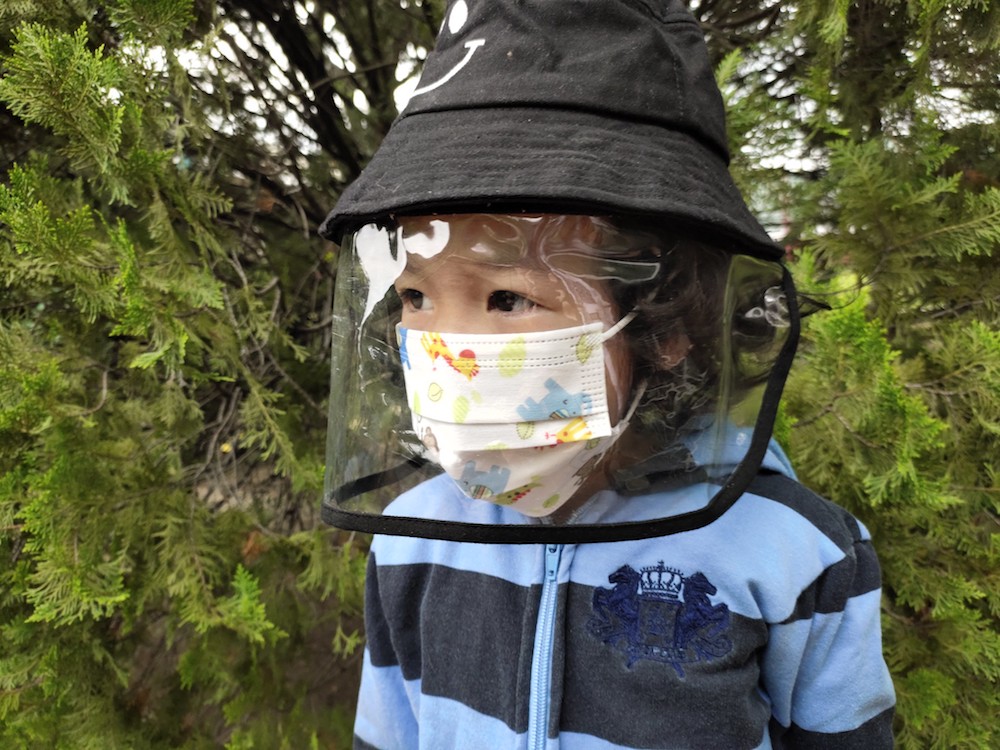The Pandemic and the Process of Becoming

As a parent of two kids in elementary school, my first weeks of the pandemic quarantine in our Midwestern U.S. town included an eruption of emails passed along by other parents: links to enrichment activities, science lessons, outdoor quests, and scavenger hunts. These messages felt exhausting, a reminder of what other moms were doing. They hovered in my inbox.
Eventually, I decided to open one. Calling over my 6-year-old son and my 8-year-old daughter one morning, I clicked to a PDF and scrolled through a collection of science experiments to do at home. We got to one titled “Changing States.” It included an illustration of an unbroken egg nestled at the bottom of a jar. The egg was larger than the opening of the bottle. The three of us stared at the sketch, intrigued.
To get an egg into a bottle, we learned, we first had to immerse it in vinegar for two days. The shell gradually transforms from hard and brittle to yielding and springy. Our result was a rubber egg we could press our fingers into. An egg and yet not an egg.
Next we needed to create conditions of pressure. Picking up the glass bottle with tongs, I held it down in a pot of boiling water as the air inside expanded, molecules swirling against one another. We then carefully placed the egg-not-egg on the mouth of the warmed glass bottle. The egg began to be sucked down through the opening of the jar, squeezed and contorted.
Our egg went halfway through and then stopped. I gingerly pushed on it with my finger, trying to maneuver it further down into the waiting space below without breaking the shell. The egg edged a bit downward.
But my son then gently clasped my wrist, stopping me from pushing down further. “How,” he asked me, brown eyes anxious, “will we get it out again?”
Over the following days, the image of an egg suspended in a jar lingered in my mind. As an anthropologist, the in-between egg reminded me of the work of Victor Turner, a British anthropologist who wrote in the 1960s and 1970s. Turner is perhaps best known for his work on liminality: the quality of the times when people find themselves “betwixt and between” more comfortable and recognizable states of the status quo.
One category of liminal events, as described in his 1967 book The Forest of Symbols, includes personal milestones, such as birth, marriage, and death. Another category includes “rituals of affliction.” As implied, these mark times of struggle. The burden of affliction may be borne by the individual—as in times of illness or grief—or by a collective community, as with periods of famine or war.
Liminal periods are times of intense human transition; Turner sees these moments as “a process, a becoming.” The individual who emerges on the other side of a liminal event is not the same as the individual who entered it. This process is unsettling. It requires a separation from cultural attachments and a fundamental dissolution of the usual mental and social structures that guide and shape us as people.
During liminal periods—which can last from days to months—things as we know them dissolve and become reinvented. Gender norms, social hierarchies, or cognitive categories: each may be rendered ambiguous and fluid. In a liminal state, Turner writes, one is “neither here nor there.”
In developing his ideas of liminality, Turner drew from his field research in the 1950s with the Ndembu (or Lunda-Ndembu) people in Zambia (then Northern Rhodesia). He wrote of the profound choreography that he saw underlying Ndembu liminal events as successions of generations passed through established rituals that eased the uneasiness of difficult transitions.
Liminal periods are times of intense human transition.
As one example, Turner described how cohorts of boys passed through the liminal stage of childhood to adulthood. As part of a circumcision ritual at that time, they went off together into a nearby forest to share a short period of collective living, reflection, and becoming. They returned changed, and bonded. Somewhat unusually for anthropologists of the time, Turner pointed to parallel liminal rituals within his own culture, such as the rite of passage of going to a military academy. (Anthropologist James Pritchett returned to the theme of male friendship among the Lunda-Ndembu more recently.)
In these pandemic times, the days feel liminal. As the weeks go by, I find myself neither alone nor among, as I shelter in place, hunker down, stare at screens, grasp at fog. I watch within my community as previous social structures dissolve and are made new. I see the invention of new rituals: masks, handwashing, temperature checks. We look at each other through glass windows. We learn to smile with the top half of our faces. We perform calm for our children.
Unlike with Turner’s account of the Ndembu, though, there is no well-trodden path to lead us through to the other side. We have no idea where it all leads, or indeed if it leads anywhere. We are betwixt and between the betwixt and between. An egg and yet not an egg, halfway down a bottle.
For Turner, liminal moments are nearly boundless in their revelatory potential. Untethered from our entrenched ways of being and thinking, he wrote, we are free to reimagine the very tenets of our knowledge—to “juggle with the factors of existence.” Turner regards liminal spaces as spaces infused with hope and possibility.
I want to believe that he is right. I want to trust that we in the U.S. will collectively emerge from this moment kinder, more thoughtful, and more just. But I’m not confident that this will come to pass.
I do agree with Turner that people have an incredible capacity for resilience. As an anthropologist, I am continuously struck by how humans can stretch and bend through times of affliction. Yet, over these past months, this resilience has oftentimes been heartbreaking to see. Walking with my son around our neighborhood, he now automatically swerves onto the grass divide as we pass another person on the sidewalk. My daughter cringes when people approach her—as they lean forward, she leans away.
I fear I am not fulfilling one of the basic human obligations we have toward one another: that as our children emerge from their shells, we release them out and up into the open air.
Back in my kitchen the morning of the experiment, I looked again at the strange gelatinous egg my children and I helped create, trapped between being in a jar and not being in a jar. I felt a wave of panic rise in my chest. I couldn’t answer my son’s question: I didn’t know how to get the egg back out again. Turning to my laptop, I scrolled down to the next page of the instruction booklet to see if it explained what to do next.
It didn’t. Instead, the instructions moved blithely on to the next activity: the underwater volcano.

































